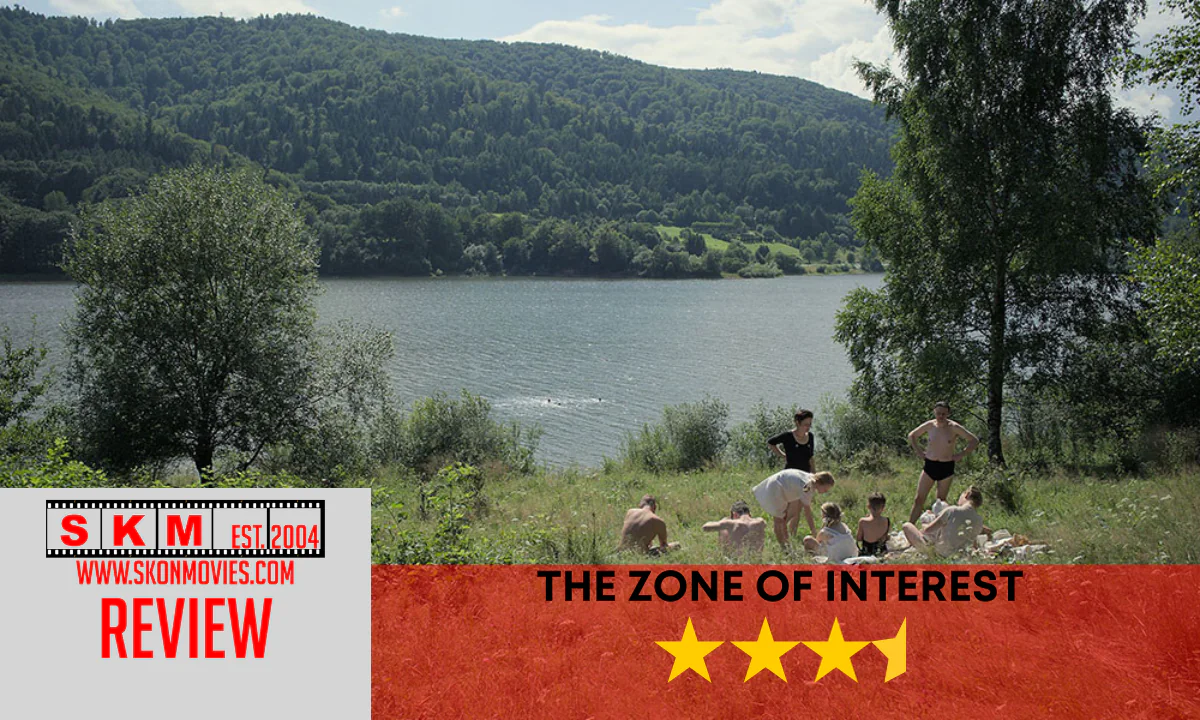Content Advisory: The Holocaust
The commandant of Auschwitz lives with his family right next to the atrocities going on inside the concentration camp in The Zone of Interest. Rudolf Höss (Christian Friedel) is the commandant of the Auschwitz concentration camp, who lives with his wife Hedwig (Sandra Hüller) and five children at an estate that borders the fence of the camp. The two undergo their domestic lives, blissfully unconcerned about the constant sounds of gunshots or the glows of the crematorium fires.
The Zone of Interest Synopsis
The Zone of Interest is a World War II Holocaust drama written and directed by Jonathan Glazer (Under the Skin),

My Thoughts on The Zone of Interest
The Zone of Interest is a film that goes all-in on Hannah Arendt’s theory of the Banality of Evil during the Holocaust. Neither Rudolf Höss nor his wife Hedwig are depicted as particularly horrible people, even though they are complicit in the extermination of thousands of Jews. Jonathan Glazer highlights this with The Zone of Interest’s sound design, where gunshots and other atrocities are constantly heard in the background. At the same time, the characters continue with their daily routines. In fact, the main plot thread of the film involves Rudolf getting promoted and having to transfer to Berlin, while Hedwig opts to continue the life she has built for herself and her children.
Jonathan Glazer also highlights The Zone of Interest with the experimental flourishes that were also present in his previous film Under the Skin. This includes zooming in on a flower until the whole screen turns red and the scenes of a Polish girl secretly hiding apples, shot in black and white night vision. While much of The Zone of Interest is without a proper score, when music does play, it is in a very pulsating and ominous tone.
Going in I expected to be much more affected by The Zone of Interest than I ended up being. I don’t know if it’s my prior knowledge of what the film was about or the fact that being on the autistic spectrum affected my response, but I found the film to be numbing on an emotional level. Perhaps, I just need something visceral to be happening on screen to truly have an emotional response. Even the ending of The Zone of Interest, which references Joshua Oppenheimer’s The Act of Killing, I didn’t truly understand until it was explained to me afterwards. As such, The Zone of Interest is probably a film that benefits more from multiple viewings.


